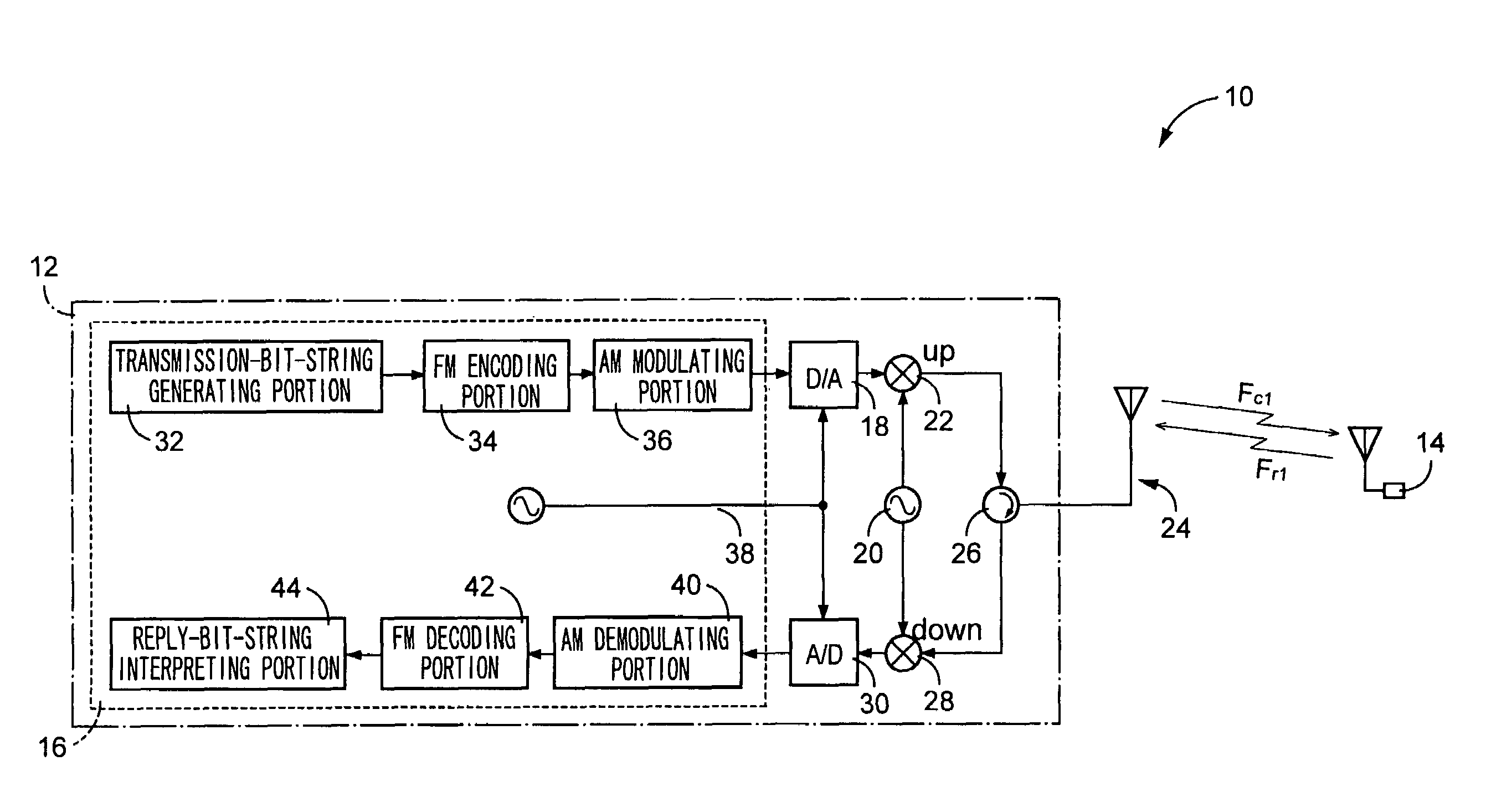Radio-frequency identification tag communication device
a radio frequency identification and communication device technology, applied in the direction of transmission monitoring, near-field systems using receivers, instruments, etc., can solve the problems of communication device having a risk of failure to communicate with the desired radio-frequency identification tag, limited maximum distance of communication with the tag according to the conventional array antenna technique, etc., to maximize the signal-to-noise ratio and maximize the density of transmission power
- Summary
- Abstract
- Description
- Claims
- Application Information
AI Technical Summary
Benefits of technology
Problems solved by technology
Method used
Image
Examples
embodiment 1
[0041]Referring to FIG. 1, there is shown an arrangement of an ordinary RFID (Radio-Frequency Identification) communication system 10. This RFID communication system 10 includes a radio-frequency identification tag communication device 12 functioning as an interrogator, and a radio-frequency identification tag 14 functioning as a transponder. The radio-frequency identification tag communication device 12 is arranged to transmit a transmission signal in the form of a transmission wave Fc1, and the radio-frequency identification tag 14 is arranged to receive the transmission wave Fc1 and replies to the received transmission wave Fc1 by transmitting a reply signal in the form of a reflected wave Fr1 which is generated by modulating the transmission signal Fc1 on the basis of predetermined information. The radio-frequency identification tag communication device 12 is further arranged to receive the reflected wave Fr1, and demodulate the received reflected wave Fr1. Thus, the radio-frequ...
embodiment 2
[0080]Another preferred embodiment of this invention will be described in detail by reference to the drawings. In the drawing figures referred to in the following description, the same reference signs as used in the preceding embodiment will be used to identify the same elements, redundant description of which is not provided.
[0081]Referring to FIG. 17, there is shown an electric arrangement of a radio-frequency identification tag communication device 90 according to the second embodiment of this invention. This radio-frequency identification tag communication device 90 includes: an Am modulating portion 36 arranged to modulate the encoded signal encoded by the FM encoding portion 34, according to an AM method, on the basis of predetermined information; a transmission-signal D / A converting portion 18 arranged to covert the digital transmission signal generated by the AM modulating portion 36; a plurality of transmitter variable phase shifters 92a, 92b, 92c (hereinafter collectively ...
PUM
 Login to View More
Login to View More Abstract
Description
Claims
Application Information
 Login to View More
Login to View More - R&D
- Intellectual Property
- Life Sciences
- Materials
- Tech Scout
- Unparalleled Data Quality
- Higher Quality Content
- 60% Fewer Hallucinations
Browse by: Latest US Patents, China's latest patents, Technical Efficacy Thesaurus, Application Domain, Technology Topic, Popular Technical Reports.
© 2025 PatSnap. All rights reserved.Legal|Privacy policy|Modern Slavery Act Transparency Statement|Sitemap|About US| Contact US: help@patsnap.com



